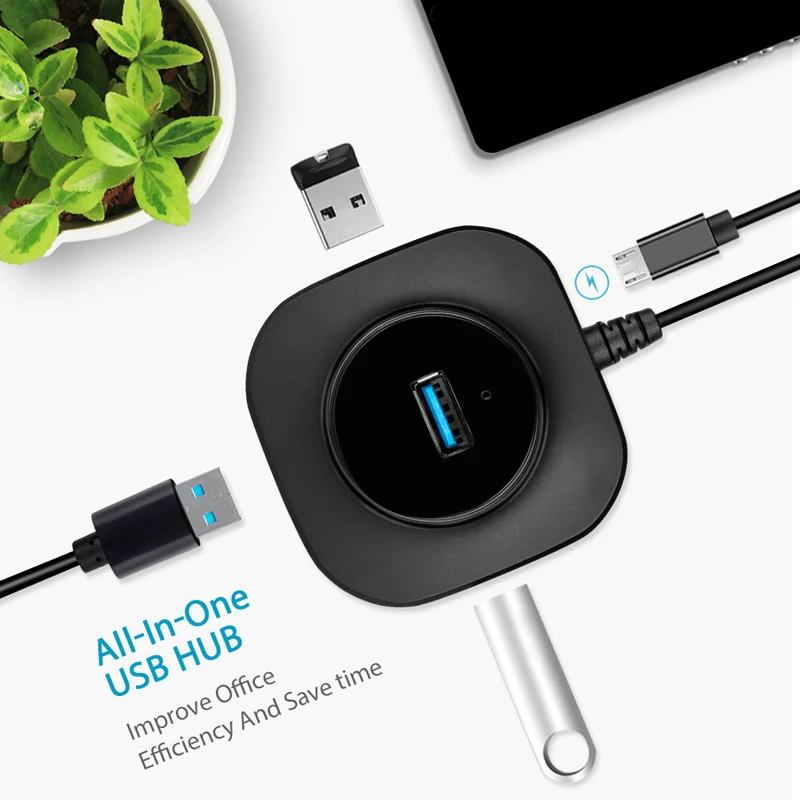
- #MULTI PORT USB HUB DATA TO MORE THAN ONE DEVICE AT A TIME FULL#
- #MULTI PORT USB HUB DATA TO MORE THAN ONE DEVICE AT A TIME PLUS#
It is an important consideration that in common language (and often product marketing) USB 2.0 is used as synonymous with high-speed. "Tom's Hardware UK and Ireland" URL last accessed on August 24 2006.] Having multiple translators is only a significant benefit when connecting multiple high-bandwidth full-speed devices. Some designs use a single transaction translator, while other designs have multiple translators. Each transaction translator segregates lower speed traffic into its own pool, essentially creating a virtual full-speed bus. While high-speed hubs support all device speeds, low and full-speed traffic is combined and segregated from high-speed traffic through a transaction translator. High-speed devices should fall back to full-speed when plugged in to a full-speed hub (or connected to an older full-speed computer port).

To allow high-speed devices to operate in their fastest mode all hubs between the devices and the computer must be high speed.
#MULTI PORT USB HUB DATA TO MORE THAN ONE DEVICE AT A TIME FULL#
The assumption is that the user will most likely connect many low power devices and only one or two requiring a full 500mA.
#MULTI PORT USB HUB DATA TO MORE THAN ONE DEVICE AT A TIME PLUS#
For example, many 7 port hubs come with a 1A power adapter, when in fact seven ports could draw a maximum of 7 x 0.5 = 3.5A, plus power for the hub itself. Some powered hubs do not supply enough power to support a 500mA load on every port. These hubs and devices do allow more flexibility in the use of power (in particular many devices use far less than 100 mA and many USB ports can supply more than 500 mA before going into overload shut-off) but they are likely to make power problems harder to diagnose. Equally there are plenty of non-compliant devices that use more than 100 mA without announcing this fact (or indeed sometimes without identifying themselves as USB devices at all).

However, there are many non-compliant hubs on the market which announce themselves to the host as self-powered despite really being bus-powered. Many hubs can operate as either bus powered or self powered hubs. In contrast a self-powered hub is one that takes its power from an external power supply unit and can therefore provide full power (up to 500mA) to every port. If more units of current are required by a device than can be supplied by the port it is plugged into, the operating system usually reports this to the user. Therefore a compliant bus powered hub can have no more than four downstream ports and cannot offer more than four 100 mA units of current in total to downstream devices (since one unit is needed for the hub itself). USB current (related to power) is allocated in units of 100 mA up to a maximum total of 500 mA per port. However, many devices require more power than this method can provide, and will not work in this type of hub. It does not need a separate power connection.

Separate USB hubs come in a wide variety of form factors from boxes that look similar to a network hub to small designs intended to be plugged directly into the USB port on a computer (that is, without a connecting cable).Ī bus-powered hub is a hub that draws all its power from the host computer's USB interface.

USB hubs are often built into equipment, normally keyboards, or monitors or more rarely printers. A USB hub is a device that allows many USB devices to be connected to a single USB port on the host computer or another hub.


 0 kommentar(er)
0 kommentar(er)
